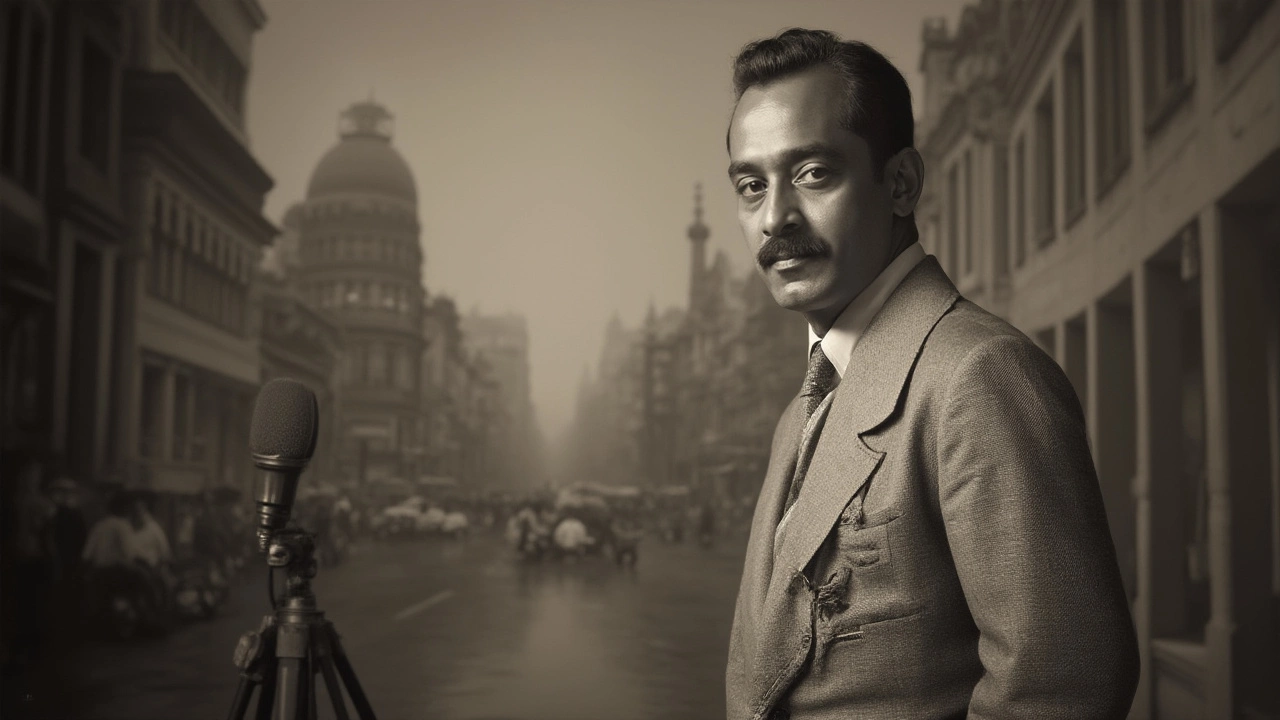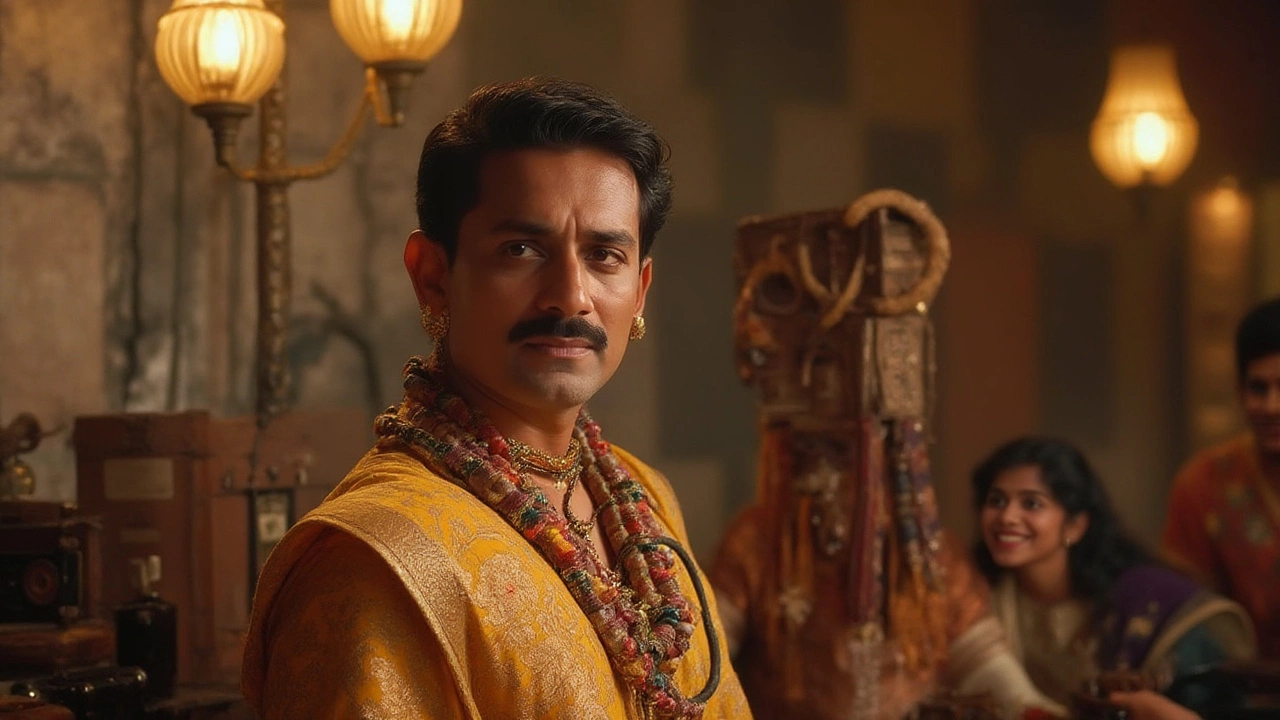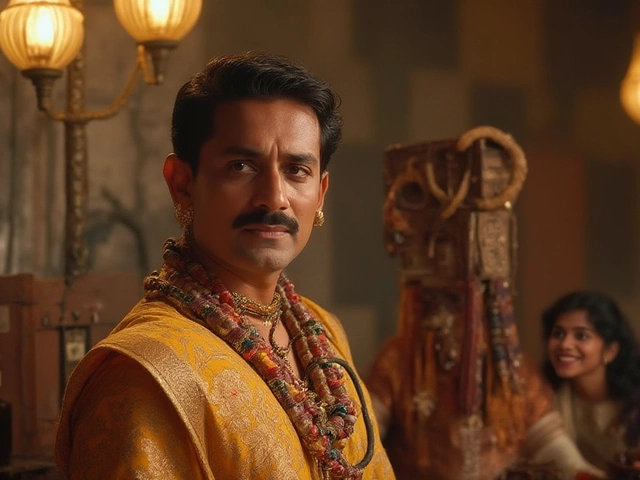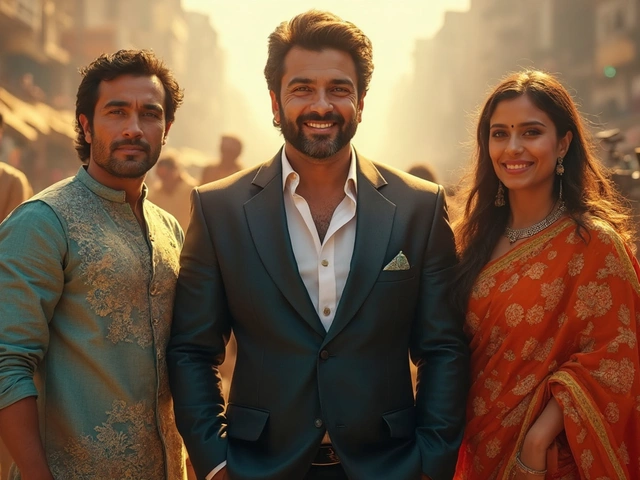Picture this: the very first Tamil film flickers onto a screen, barely a hundred folks scattered on wooden benches, unsure if moving pictures are magic or a passing craze. There's no red carpet, no fan clubs, just curiosity and courage. For many, Tamil cinema's heroes are household names—Rajinikanth and Kamal Haasan come to mind. But who set the stage for these icons? Who was the first Tamil actor to command the camera’s attention and spark a century-long love affair with cinema in the state? The answer isn’t as simple as a name buried in archives, and the journey gets much more interesting as we dig through sepia-toned photographs, local legends, and rare interviews.
The Origins of Tamil Cinema: Magic Lanterns, Silent Films, and Dreams
Let’s roll the film back to the early 1900s. Electricity was a luxury, but the magic lantern shows—projecting painted pictures onto canvas—were wildly popular. These shows paved the way for Indian silent cinema’s arrival. Silent films began screening in Madras (modern-day Chennai) around 1909, with imported titles thrilling early moviegoers. Most films had no soundtracks or dialogue, but local musicians would play live to create atmosphere. In those days, the idea of a "Tamil actor" was almost nonexistent because films came from Bombay (now Mumbai) or Calcutta (now Kolkata), and featured mostly Anglo-Indian or Parsi performers.
The jump to locally-made stories was slow. The first known Tamil feature film, “Keechaka Vadham” (1916), directed and produced by R. Nataraja Mudaliar, is now recognized as the spark that started Tamil cinema. Mudaliar had no blueprint—he hired a motley cast, including some of his own friends. The film adapted a familiar tale from the Mahabharata, and acting was theatrical to make up for the lack of words. Among those stepping into the limelight was Raju Mudaliar, who played Keechaka. His performance marked him as the first Tamil actor in a film made by Tamilians, for a Tamil audience. The film had no spoken lines, so actors had to exaggerate every emotion—widen the eyes, wave the hands—letting gestures speak for words. This silent era, lasting roughly until 1931, used intertitles (written exclamations between scenes) in Tamil to guide viewers through the story. In many silent films, male actors had to portray both male and female roles, since women from "respectable" families rarely appeared on screen.
The Trailblazers: Who Truly Was the First Tamil Actor?
Here’s where the debate heats up. If you ask a seasoned film historian or comb through old Tamil newspapers, you’ll find more than one contender for this title. Raju Mudaliar is the name most widely cited, credited for his part in “Keechaka Vadham.” Still, the question lingers: does being the first actor in the first Tamil silent film make him the first Tamil actor? Some believe that distinction should go to M. Marudachalam Chettiar, who appeared in “Valli Thirumanam” (also silent, 1921). Others point to P. K. Raja Sandow, a prolific actor-director from the 1920s, who later achieved superstar status in the 1930s.
Yet, it’s S. R. Raghupathi who shook up things in the early talkie era. When “Kalidas” (1931), the first Tamil talkie, hit screens, Raghupathi played Lord Shiva, mesmerizing audiences not just with his words but his commanding presence. His dialogue delivery, gestures, and ability to bring epic characters to life became a template for future stars. Some film fans and scholars argue that Raghupathi deserves equal credit as a pioneering Tamil actor. The talkie revolution meant more authentic Tamil inflection, singing, and spoken dialogue—so a new kind of stardom was born.
Here’s a handy table of the most significant early Tamil actors and the films they appeared in:
| Actor | Film | Year | Significance |
|---|---|---|---|
| Raju Mudaliar | Keechaka Vadham | 1916 | First Tamil silent film actor |
| M. Marudachalam Chettiar | Valli Thirumanam | 1921 | Early silent era actor |
| P. K. Raja Sandow | Various (including Bhaktha Narasimha) | 1920s-1930s | Leading star & director |
| S. R. Raghupathi | Kalidas | 1931 | First Tamil talkie main actor |
| T. P. Rajalakshmi | Pavalakkodi | 1934 | First Tamil actress, later director |
The line blurs even more when you include stage actors who transitioned into cinema or consider performers in Tamil-language segments of multilingual films. But Raju Mudaliar’s performance in “Keechaka Vadham” remains the moment where the phrase "first Tamil actor" became something real and recordable.

Early Cinema’s Untold Stories: Challenges, Risks, and Odd Traditions
Being first is never easy—or safe. Early Tamil actors weren’t paid much, and they rarely got any fame outside their neighborhoods. Some even hid their faces in public, fearing backlash from conservative families. At the time, acting wasn’t considered respectable, especially for women. In the 1920s, almost all female roles were portrayed by men in heavy makeup and elaborate costumes, which took hours to apply.
Tamil cinema’s pioneers faced more than just societal scorn. Their studios were little more than sheds, with basic lights and rickety cameras. There was no script supervisor, no air conditioning, not even restrooms for the cast. For sound, prop men would shake sheets of metal or bang drums off-camera to mimic thunder and war scenes. Shooting could stretch from sunrise to dusk, thanks to unreliable power supplies. The average silent film ran for about an hour, but the shoots would last weeks—even for one scene! Posters were hand-painted, and reels were stored in metal tins that sometimes caught fire.
What’s wild is that these first actors often had double lives. Some were schoolteachers, factory workers, or clerks by day, memorizing lines and practicing elaborate mustache twirls at night. This double duty underscored their dedication. They paved the way for cinema’s gradual acceptance, as Tamil folks found themselves captivated by moving images that reflected their stories and language. By the late 1920s and '30s, Tamil films started to see packed rooms, and the dream of an actor as a household name seemed not just possible, but inevitable.
Legacy and Influence of the First Tamil Actor: Shaping a Century of Stars
So, what legacy did those early stars leave for today’s Tamil actors? The short answer: just about everything. Modern performances in Tamil cinema—those dramatic monologues, expressive face acting, song-and-dance routines—all draw from a playbook written by pioneers like Raju Mudaliar and S. R. Raghupathi. You’ll even find echoes of silent-film exaggeration in modern comedies and melodramas.
The journey didn't stop at one or two men on screen. In 1934, T. P. Rajalakshmi smashed barriers by becoming both Tamil cinema's first major actress and its first female director. She stepped into a world that barely allowed women to sit in audiences, let alone act. This slow shift made acting a respected (and eventually glamorous) profession. The 1940s and 50s saw new faces—M. K. Thyagaraja Bhagavathar, N. S. Krishnan, and M. G. Ramachandran—turn into cultural icons. Each one, in their own way, paid homage to the courage of those first actors for opening the door.
Fans in Tamil Nadu still talk fondly about the films that started it all. Film societies screen restored classics, and modern stars mention their forebears in interviews and speeches. Even Kollywood's blockbuster machine, with its CGI action and massive budgets, owes its roots to the raw, improvised genius of those early icons. If you ever visit Chennai, peek into archives or old movie theaters—sometimes they host screenings or discussions about the roots of Tamil cinema. Nothing beats hearing firsthand stories about actors who changed lives by simply stepping in front of a camera, decades before fame or fortune joined the show.
Curious for more? Keep digging. There are unpublished memoirs, hidden reels, and even relatives of the first Tamil actors living today who share rare stories. The wonder lies not just in knowing "who was first,” but realizing they started something bigger than themselves—a century-old bond between Tamil cinema and its fans that shows no sign of fadeout.






Post A Comment